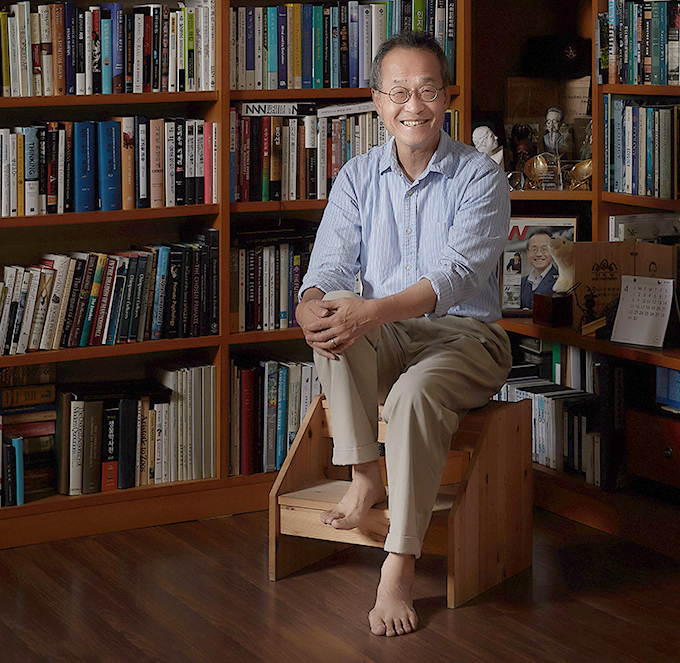
Contents





Consilience






Consilience
An Artist Who Loves Nature and a Scientist Who Loves the Arts
“There was a student who was afraid of spiders. Later, this
student became a scholar studying spiders, patting spiders with his fingers.
We damage nature because we know little.
Once we become knowledgeable, we will come to love it.”
─ ecologist Choe Jae-chun ─
Written by Park Ji-yeon Photographed by Studio Kenn
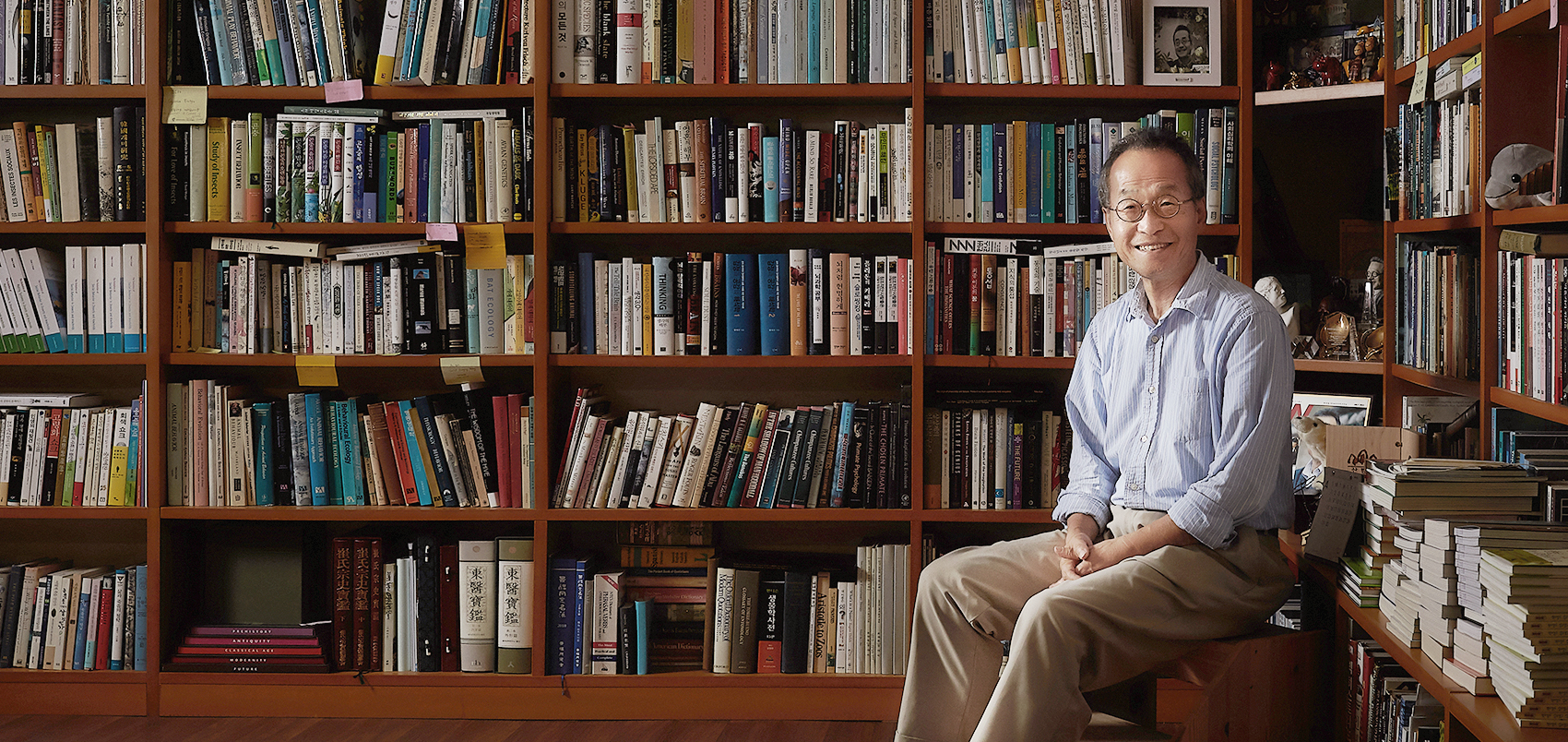
A Boy Who Dreamed of Being a Poet
Born and raised in the countryside, Choe Jae-chun had an unrivaled love for nature. Indeed, everything he could see and hear in nature was his friend. Whereas mischievous youngsters in the neighborhood would play pranks on ants, he would study trains of crawling ants, mesmerized. When insects and animals were in sight, he would approach them first without even considering any possible danger. Because of his mother’s passion for education, the young Choe had to go to school in Seoul, the biggest city in Korea, where he couldn’t see a lot of nature. However, his heart has always found its place in his childhood spent in nature. Inspired by nature, the 9-year-old would write poetry and dream of becoming a poet. In fact, even now, he is excited to attend poetry competitions.“When I was little, I couldn’t buy all the books I wanted to read, unlike now, so I asked my mother to buy at least an entire collection of works that had received a Nobel Prize in Literature. One of them was a volume of Solzhenitsyn’s works. What inspired me was a one-page essay titled ‘The Bonfire and the Ants,’ included in that book as a bonus.” The young Choe questioned the behavior of the ants in the essay, which was to rescue their peers trapped in a fire. “It was really odd. I wondered, ‘Why do they act so unselfishly?’ I could never forget that story.” This spirit of inquiry and curiosity served as the stepping stone for the young literaturelover to move on to science.
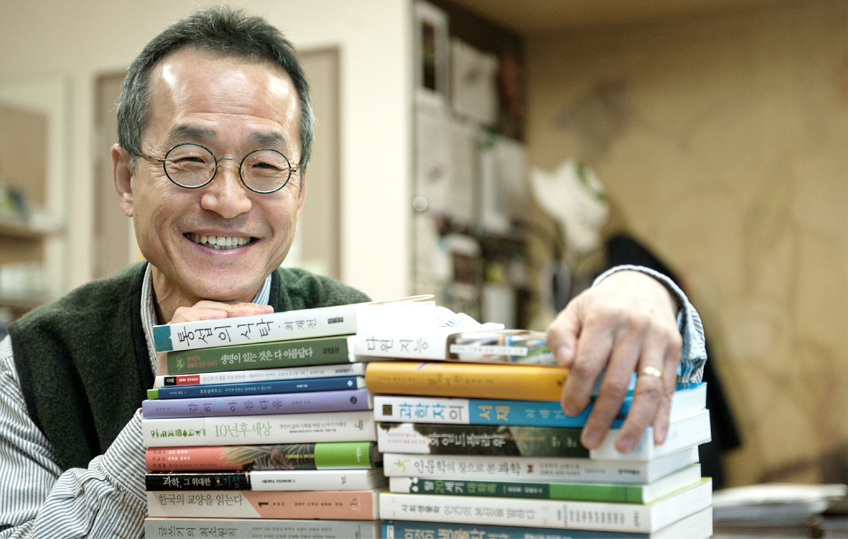 © Choe Jae-chun
© Choe Jae-chunDiversity Is What Makes Nature Beautiful
The boy who was curious about the altruistic behavior of ants rescuing their peers trapped in a fire grew into a star scientist and an international scholar with many titles, including “zoologist” and “sociobiologist.” The founder of sociobiology Professor Edward Wilson at Harvard is Choe’s mentor. “My specialty is sociobiology. I study countless life forms from ants to magpies, gibbons and dolphins. Thanks to that, I’ve solved my childhood question. There’s one common thing about the life forms I’ve studied, and it’s that they create societies. Maybe I tend only to like animals that form societies. Though their societies are similar to ours in some ways, they’re better in many ways. I learn especially much from primates and ants. In the case of primates, those in the lower tiers of a hierarchy enjoy a lot more for a lot longer than those in the higher tiers. Queen ants never lord it over worker ants. They only lay eggs. Those who create the culture of a group are the worker ants working relentlessly.”
In addition to his fascination with animal society, Choe expresses his respect for their diversity. He is confident that no matter how insignificant insects may look, we will find beauty in them when we look closer. When we examine them even more closely, they will capture us with a sense of wonder. “Chimpanzees take care of their peers hurt by other animals, and elephants trumpet to soothe sad baby elephants.” He points out that empathy is an animal instinct. This seems to be what we need in the modern society where a shoulder to lean on can save one’s life. “Diversity is what makes nature more special and beautiful. The fact that it is diverse means that we should respect it even more. The world will be a better place if we, as humans, understand this simple but important message.”
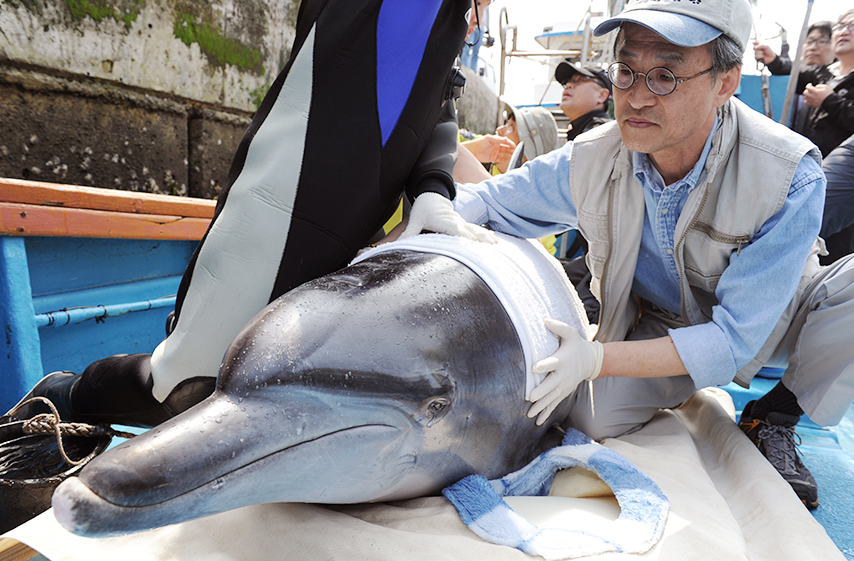 Choe takes care of a dolphin before he sends him off back to the sea. © Choe Jae-chun
Choe takes care of a dolphin before he sends him off back to the sea. © Choe Jae-chun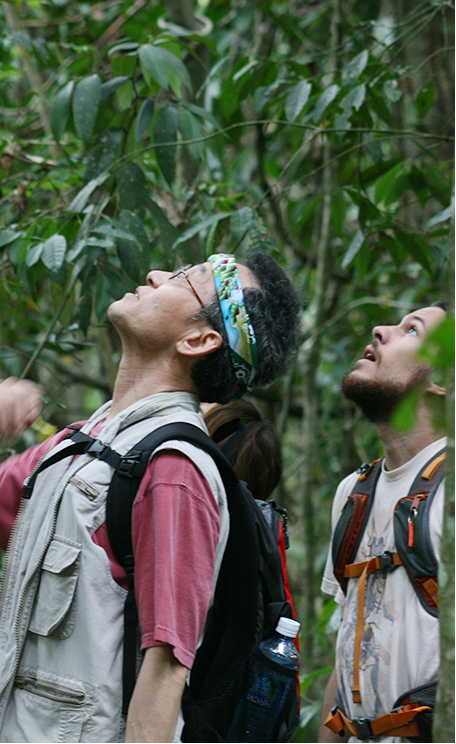 Choe and his coworkers observe and study nature. © Choe Jae-chun
Choe and his coworkers observe and study nature. © Choe Jae-chunNature, the Greatest Art on Earth
Choe has returned as a researcher after serving as the founding president of the National Institute of Ecology for over three years. He is also achieving his life goals. One of them includes having established the Biodiversity Foundation in July 2013 with the international zoologist Jane Goodall. As a non-profit organization, the Biodiversity Foundation is carrying out various research projects with the goal of conserving biodiversity.“What’s harder than looking at insects in the scorching tropics is leading an organization. Though I started with my love for diverse lives in nature, I need constant motivation to lead the organization. It gets tough sometimes, but I will never stop. In that sense, last August meant so much to me. It was the fifth anniversary of releasing five dolphins back into the ocean in Jeju Island. This reminded me of the mission we are pursuing and made me think we are on the right track.” He also adds, “Releasing the dolphins back into the ocean, however, was only the first step.” What can never be imitated, even with the most advanced technology and abundant capital, is nature. We cannot manipulate nature to make art out of it. In fact, nature is the ultimate form of art. We eat, dream, and reside in it. We have to learn to live in harmony with nature, as we are part of it.
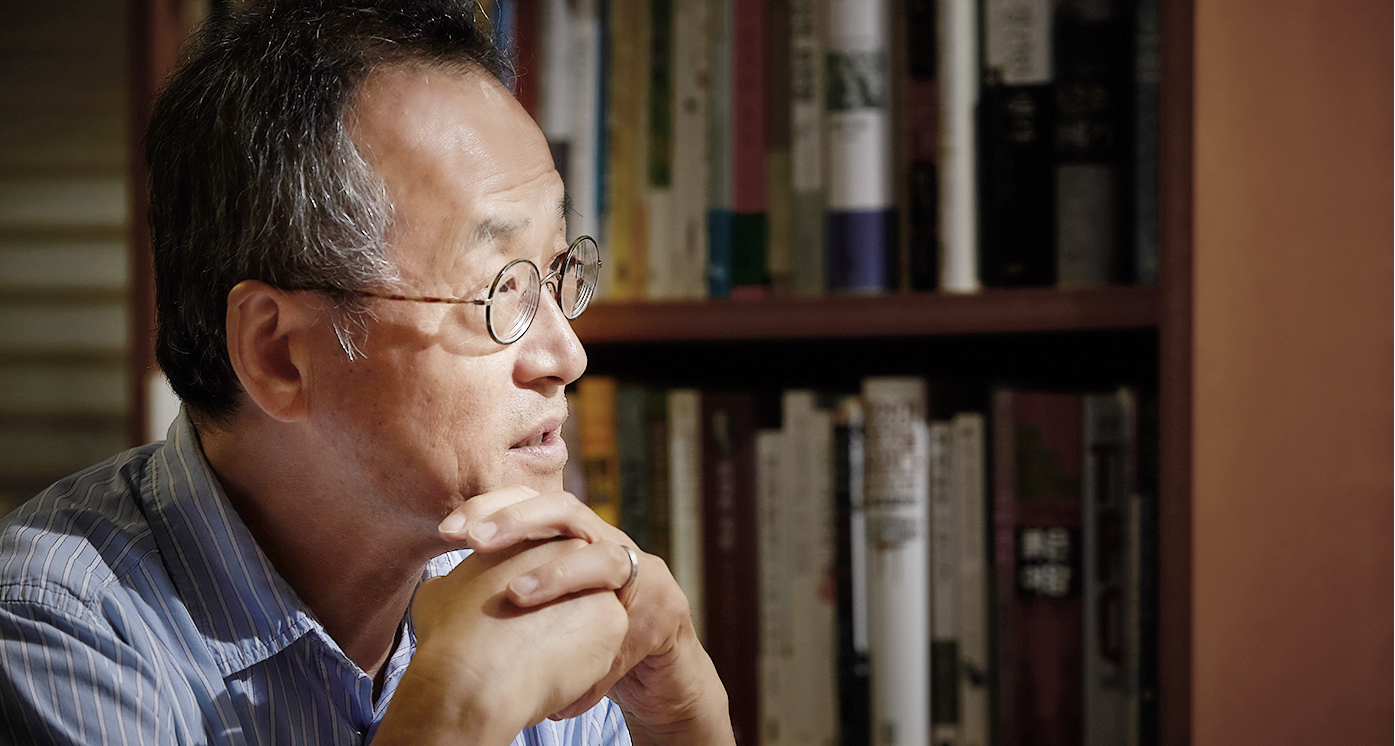
Spirit of Consilience
Choe, who used to love poetry, showed his potential as an artist himself in his childhood. It took one sculpture class for his art teacher to notice his potential. However, faced with his parents’ disapproval, he had to let go of his dreams of being an artist. “I have no regrets. I can learn and challenge myself, to sculpt at any time. I won’t be as good as professionals who started from a young age, but being a scientist doesn’t mean you can’t write poetry or create sculptures. An artist can be a scientist and a scientist can be an artist. It’s the same with academic learning, as well. This is an age where a multiplayer capacity is required. I call this consilience.”Among many of his titles, including “sociobiologist” and “ethologist,” what highlights his role the best is “a scholar of consilience.” He comments that we should be prepared to deal with knowledge in a variety of fields since society requires us to be multi-taskers. A growing interest in the sciences among the general public, and people equipped with all kinds of experiences and knowledge that used to be known only by professionals, demonstrate his idea. “While integration is a physical combination, and fusion is chemical, consilience is a biological combination. Think of it this way: two different people get married and make children with a completely new genetic combination. This will help you understand what I mean.” He hopes that consilience serves as a bridge between the sciences and the humanities that eventually leads to a foundation for coexistence between humans and the Earth with the lesson we’ve learned from the diversity of the natural world.
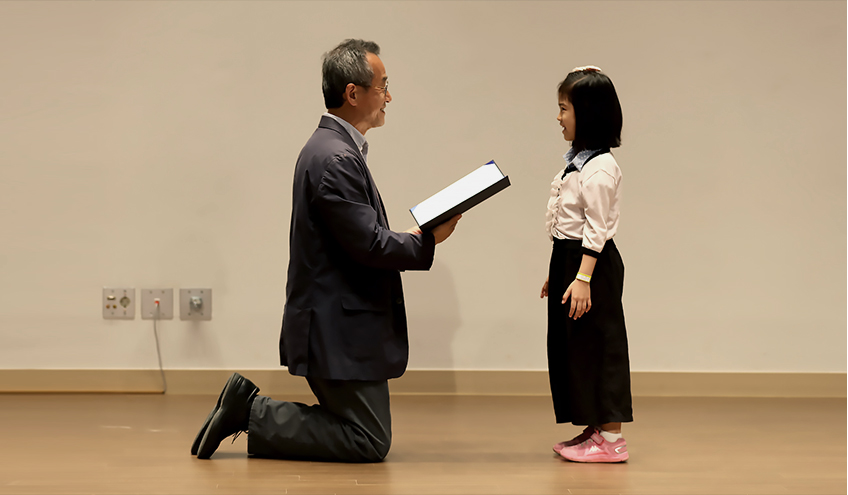 His humble attitude moves people’s heart. He awards a little girl while kneeling down at her height. © Choe Jae-chun
His humble attitude moves people’s heart. He awards a little girl while kneeling down at her height. © Choe Jae-chun-
Choe Jae-chun Profile
Professor, ethnologist, scholar
 2013 to present president at Biodiversity Foundation director at Research Institute of Ecoscience, Ewha Womans University
2013 to present president at Biodiversity Foundation director at Research Institute of Ecoscience, Ewha Womans University 2006 to present professor of Life Science at College of Natural Sciences, Ewha Womans University
2006 to present professor of Life Science at College of Natural Sciences, Ewha Womans University 2013 to 2016 founding president at National Institute of Ecology
2013 to 2016 founding president at National Institute of Ecology 2002 co-chair at International Congress of Ecology (INTECOL)
2002 co-chair at International Congress of Ecology (INTECOL) 1996 visiting researcher at Museum of Zoology, University of Michigan
1996 visiting researcher at Museum of Zoology, University of Michigan 1994 member of editorial board at Journal of Insect Behavior
1994 member of editorial board at Journal of Insect Behavior 1994 to 2006 professor at School of Biological Sciences, College of Natural Sciences
1994 to 2006 professor at School of Biological Sciences, College of Natural Sciences 1989 Eastern Branch John Henry Comstock Award by the Entomological Society of America
1989 Eastern Branch John Henry Comstock Award by the Entomological Society of America
Other Articles





Consilience





Application of subscription
Sign upReaders’ Comments
GoThe event winners
Go


 September 2018
September 2018

